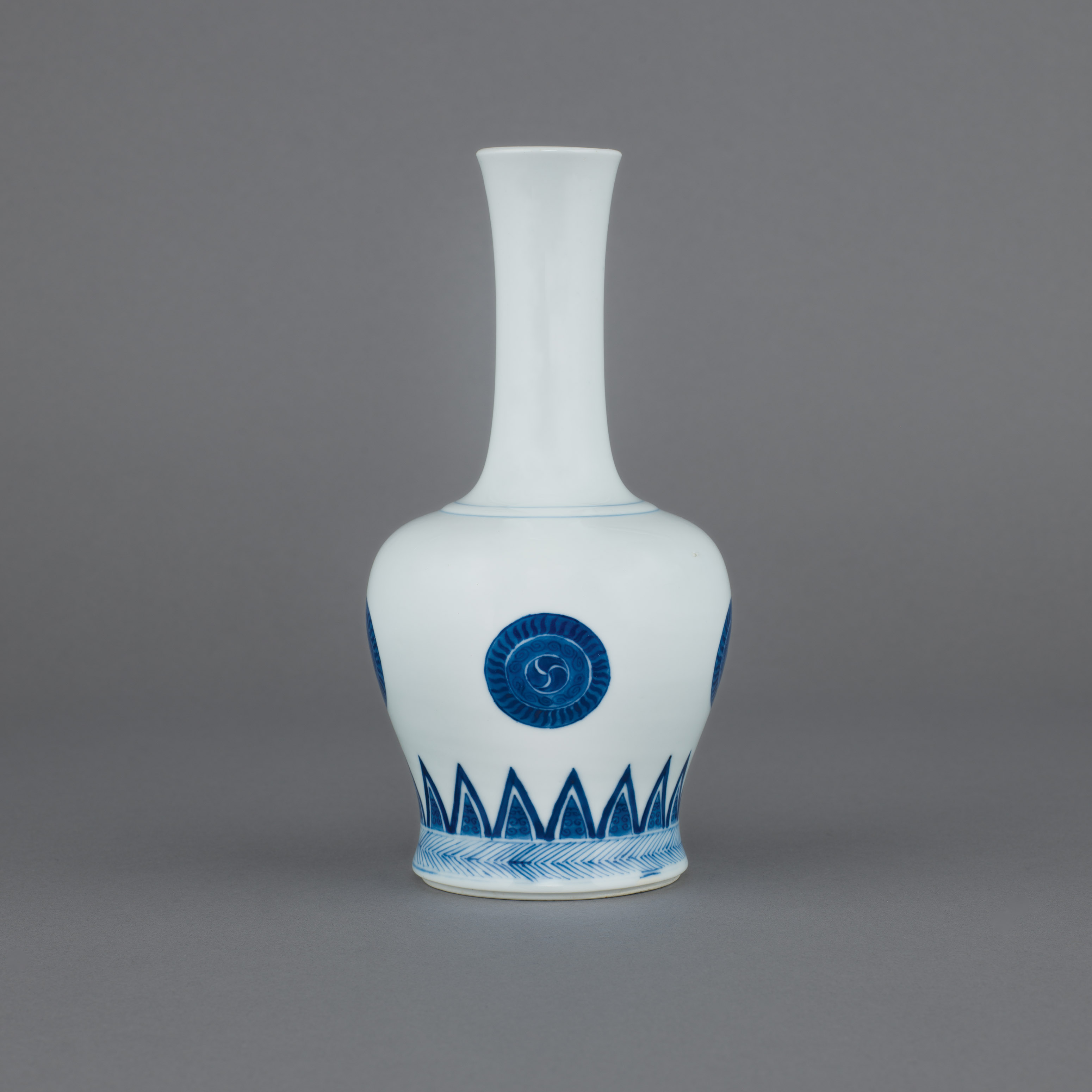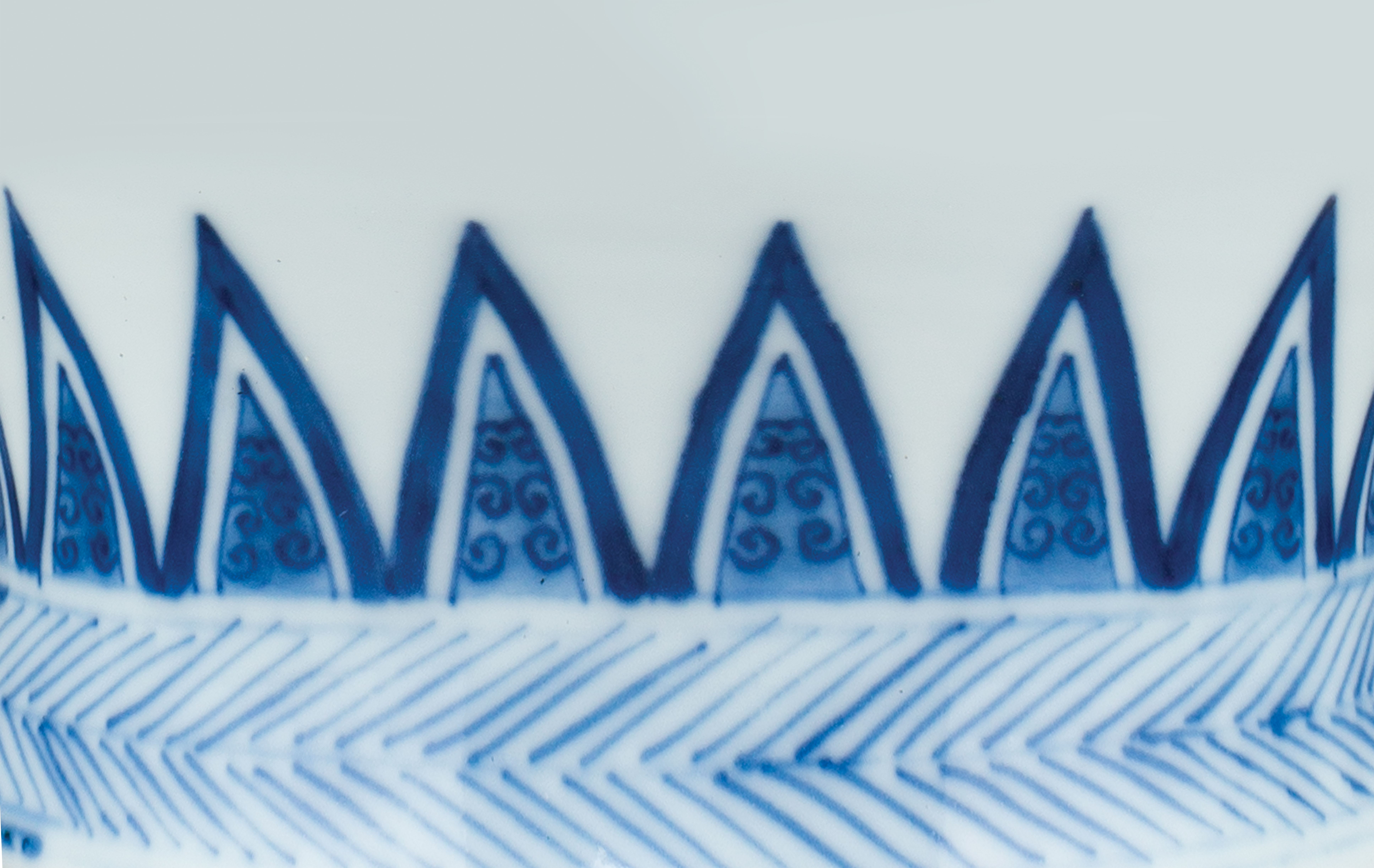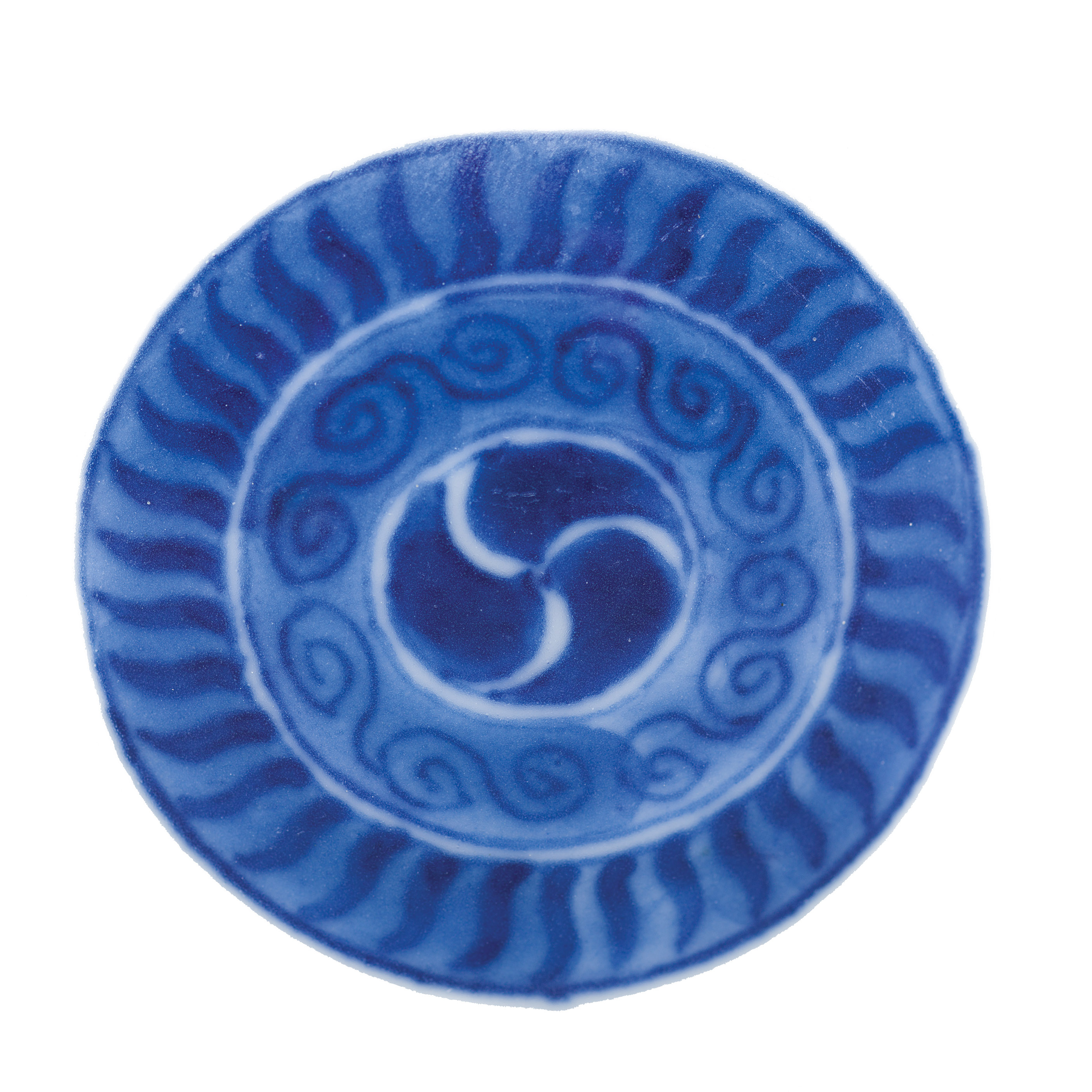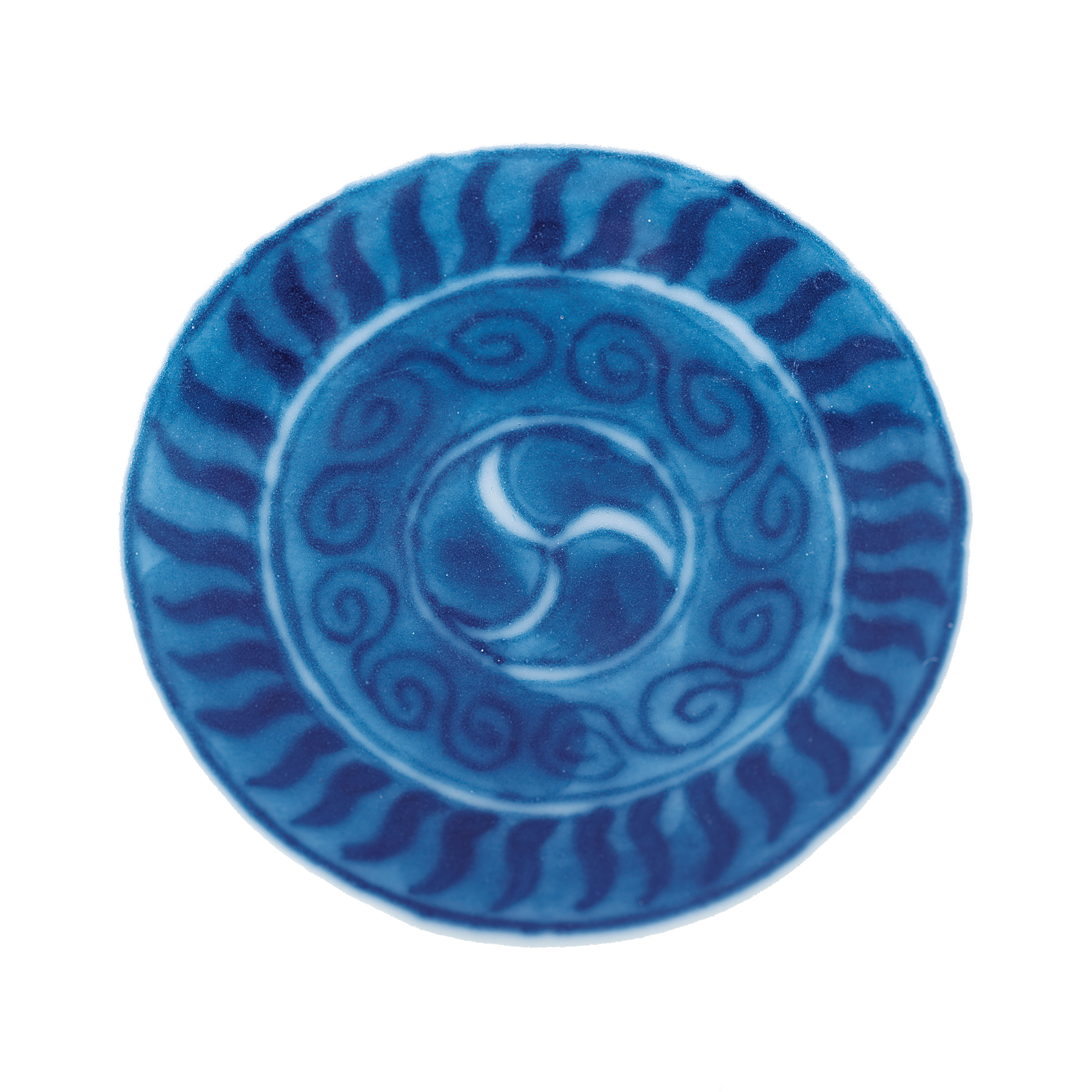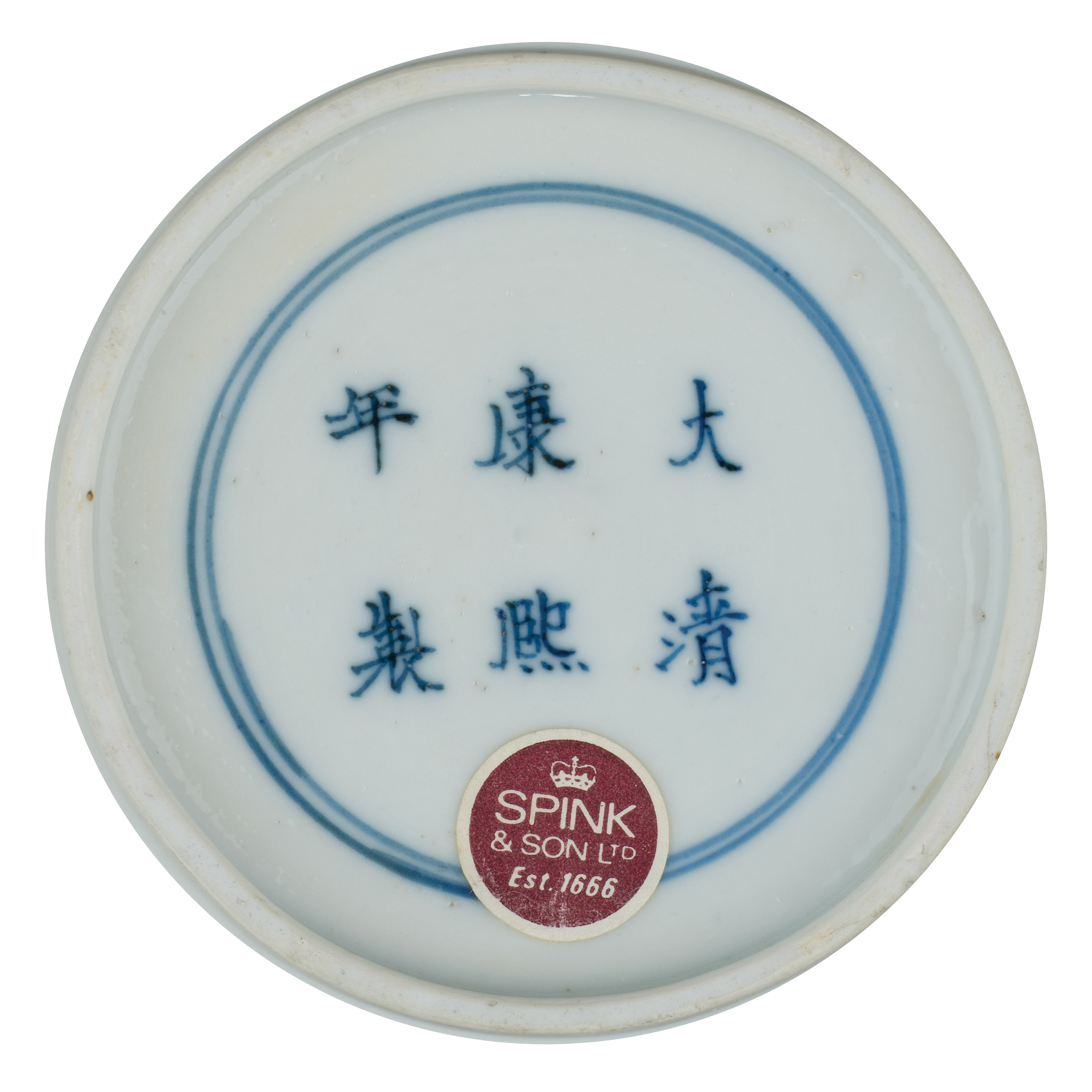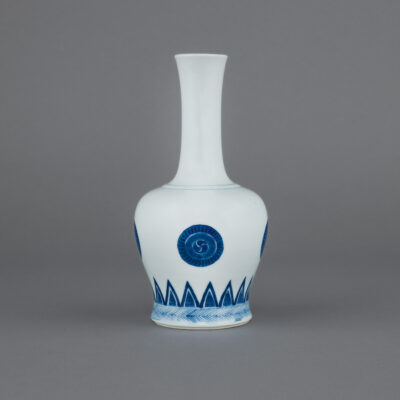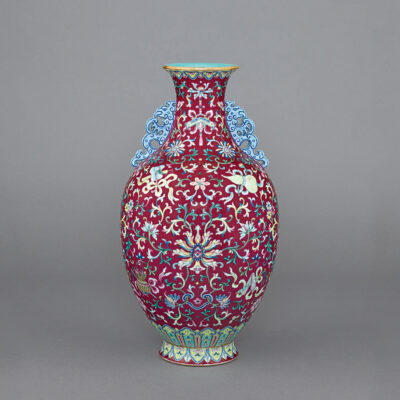5 – M5503
Description
Chinese imperial porcelain blue and white slender necked baluster vase, of handbell form, yaoling zun, painted on the body with four circular medallions consisting of three bands forming the gankyil, “Wheel of Joy”, above stylised upright pointed leaves with scrolls and a wide herringbone band at the gently flared foot, the shoulder with a single rib within two lines.
The base with a six-character mark of Kangxi within a double ring in underglaze blue and of the period, 1662-1722.
8 inches, 20.4 cm high.
Provenance & Additional Information
- Sold by Sotheby’s London in their auction of Fine Chinese Ceramics and Works of Art, 15th June 1982, lot 357, pp.248/9.
- Spink and Son, 1982.
- From the collection of Mr. H. Soudovar.
- This extremely rare vase is the prototype for all the slightly taller vases of this form with Kangxi
- This example is slightly earlier than others.
- Another, gift of Edwin Vogel, together with an underglaze copper-red example in the Metropolitan Museum of Art, New York, collection nos. 1966. 66.206.2. and 1917. 17.120.167. respectively, is illustrated by Suzanne G. Valenstein in A Handbook of Chinese Ceramics, New York, 1989, nos. 213 and 212, p. 221; another in the Qing Court Collection is illustrated in Blue and White Porcelain with Underglaze Red (III), The Complete Collection of Treasures of The Palace Museum, Volume 36, Hong Kong, 2000, no. 11, p. 15, where it notes the
- shape of this vase was a new innovation during the Kangxi period specifically for the imperial household; another is illustrated by Sir Harry Garner in Oriental Blue and White, London, 1954, pl. 74.
- No other identical example with a single rib on the shoulder outlined in underglaze blue lines appears to be recorded.
- The gankyil, “Wheel of Joy”, is traditionally the central element of the Buddhist Dharmachakra, “Wheel of the Dharma”, a symbol of universal moral order and a central symbol of Buddhist doctrine. Its use demonstrates the Kangxi Emperor’s devotion to Tibetan Buddhism.



